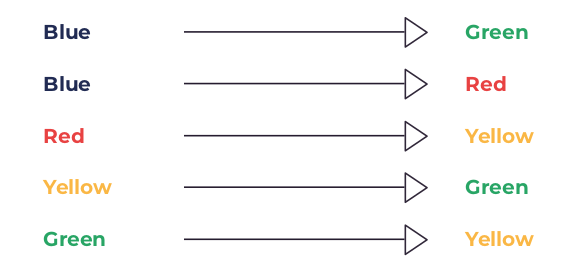The last of my communication blogs considered some of the most effective ways to communicate consciously, using the Leadership Compass to identify four types of behaviours.
We saw how Red, Blue, Green, and Yellow behaviour types look in our interactions, and how seeking out feedback about our preferences is an empowering way to practice Mind Growing as a leader.
So once you’ve understood your own preferences then, can you use the Leadership Compass to maximize your impact and work more smoothly together as a team? Of course – let me show you how!
Why Move Around?
Being able to move others around the Compass is a key way to coach them, helping them grow and develop. Sometimes as a leader, you may face some push-back, scepticism or reluctance from others; behaviour that is very useful as it often represents other perspectives.
However when people get stuck in it, it slows you down from making positive progress together toward your collective Ambition.
These behaviours tend to fall into the Blue or Red quadrants. Recall that:
- Red behaviours are quite assertive, active, and I-oriented; and
- Blue behaviours are somewhat more passive, rather more like keeping dissatisfaction or disagreement to oneself.
Ideally, we see the fastest individual and organisational change take place when we and our teammates are showing Yellow or Green behaviours.
Because we can only move from one quadrant to the next, neighbouring quadrant at one time, the following is a helpful picture of the steps that you as a leader can take – one at a time.
Here’s how you can move from withdrawing, passive Blue to Red, then over from active competing Red to initiative-taking Yellow or constructive, following Green behaviour.
From Blue To Red
If you’d like to hear more from someone who’s currently behaving somewhat withdrawn or quiet, your goal is very likely moving them from Blue to Red. For instance, if a new employee requires coaching help from our friend Rupert, but the latter is acting somewhat Blue – quiet and reluctant to help – then you, as a leader, can:
- Recognize their behaviour. Without being overly active and thus promoting Rupert’s passivity, you can try, “Rupert, you’re rolling his eyes, let’s talk about why!”
- Ask questions, then listen actively. Listening to Rupert’s response should reveal a bit about not just why he’s hesitant, but where your issue lies. Is it a boundary issue? Does he not relate to your shared Ambition, full stop?
- Lower the threshold, inviting others to speak. Create a space for them to speak by removing any boundaries. You could try telling them how curious you are, or how much their opinion means to you.
Turning Red to Yellow
Has Rupert started to show more Red behaviours by now? If he is still mostly “I-focused”, but more “active” – for example sharing his opinions – the answer is probably yes!
As I share in Mind Growing, you could next move him over to the more “we-focused” Yellow quadrant by:
- Acknowledging more. Now that he’s telling you about his concerns or hesitation, express agreement when you feel it! “Ah, I understand that coaching is not as fun to you as solving problems.”
- Asking more questions. Move forward by finding out some specifics on what exactly is working for them and what’s not.
- Checking your purpose. Clearly establish whether yourself and Rupert are still after the same Ambition – for example, a more learning-oriented workplace. This is a further way to see whether you’re tackling the right Leadership ABCs challenge at all!
- Summarizing and acknowledging their interests and goals. Finally, a key part of active listening is ensuring your listener feels heard and understood. If Rupert’s intentions are indeed to coach, but to go about it differently, both he and you can be clearer on this when you rephrase what you hear, back to him. “Oh good, we’re after the same thing, you just want a different approach!”
As you can see, moving others – and even yourself! – over toward Yellow or Green behaviours requires a host of communication skills. It’s why understanding actions and reactions gives you such powerful insight and influence as a leader.
Over To You
Once you’re dealing with Yellow or Green behaviours, you will find more useful tips about switching between these two in Mind Growing. To further inspire you, I’ve also prepared some hands-on examples that you can work with directly on my website: MindGrowing.net.
If you’re looking for a tactical and real-life case study, you’ll find these helpful in shifting collective energy toward your shared Ambition, in a positive, meaningful way.
